Increasing your protein intake has been a longtime recommendation in the fitness industry. Pros have long known that a higher protein diet not only supports a lean body and lean body mass maintenance, but also improves satiety, increases overall calorie expenditure, supports recovery from exercise, and improves bone density. But having someone increase their protein intake isn’t always as simple as just telling them to do so.
How Much Protein Do I Need?
When calculating individual needs, I’ve found that one gram of protein per pound of goal body weight each day has worked well for those who are active and working out. Because protein needs increase when someone is in a caloric deficit, ample protein is critical for those aiming to lose weight or body fat.
At minimum, we recommend each person aim for at least 30 grams of protein at each meal. This target is a perfect amount to help steady blood-sugar levels, dampen cravings, and support energy levels. It also helps you to reap the benefits of protein throughout the day versus just one large, protein-heavy meal at the end of the day (e.g., dinner).
Consuming 30 grams of protein at each meal can be so powerful that it’s why it’s central to Life Time’s 1-2-12 Complete Nutrition System, which is a healthy-eating approach designed to help anyone implement what Life Time dietitians teach their personal clients in order to transform their health and get results for the long haul.
This target may be higher than what many are used to consuming, but the benefits make it worth it to try to find strategies to help make sufficient-protein meals an easy habit. For example, the 1-2-12 system includes a cookbook with dietitian-approved, high-protein recipes, easy meal-prep strategies, step-by-step tips for flavoring foods in a way you’ll love, and guidance around what to shop for and eat when time is short. We find this level of resources can really make hitting this goal doable for people.
Learn more:
Protein-Rich Foods (30 grams per serving)
When it comes to choosing protein-rich foods, there are two sources: animal or plants. Here is a list of the common sources of each one:
- Animal: chicken, turkey, pork, beef, lamb, buffalo/bison, seafood, eggs, and dairy
- Plant: soy, beans, legumes, lentils, grains, nuts, and seeds
When it comes to quality, animal-based proteins are considered nutritionally superior since they contain more ample amounts of the nine essential amino acids that support health and metabolism. With the exception of soy, plant-based proteins usually lack meaningful amounts of at least one essential amino acid, if not more. (Note: Plant-based proteins can be combined to provide more balance in your intake of amino acids, but they tend to include a lot of extra carbohydrates or fats, depending on the source. Read more here: “Expert Picks for Plant-Based Proteins.”)
To get the most from animal-based proteins, look for grass-fed beef, pasture-raised poultry and pork, and wild-caught fish. When these animals are raised on diets they are meant to eat, their fat content is often less and the fat is healthier, containing more omega-3 fatty acids and less saturated fat. These animals are also usually raised without the use of antibiotics or hormones. It’s also important to note that some protein sources are common allergens, such as dairy and soy. If you do consume them, be sure to choose organic.
What Does 30 Grams of Protein Look Like?
Generally speaking, a solid and protein-rich meal contains at least 30 grams of protein. (Again, this is why this target is the foundation of our signature nutrition system and philosophy at Life Time.) Below is a great resource on what 30 grams of protein looks like in food form, whether it be animal-sourced or plant-based. Use it as a go-to list (you can hang it on your fridge!) when menu planning and meal prepping.
1. Grilled Chicken Breast
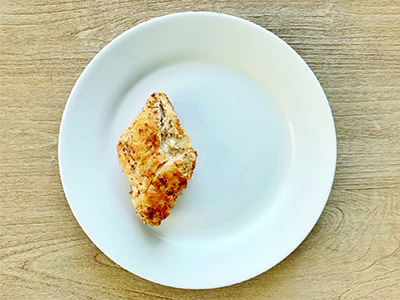
A standard 4-ounce serving (slightly larger than the size of a deck of cards or about the size of the palm of your hand) of cooked boneless, skinless chicken breast will give you about 30 grams of protein. Although you can assume that 4 ounces of cooked poultry (chicken or turkey) will equate to around 30 grams of protein, below are other common cuts of chicken and what protein they provide in their standard serving size. Whenever possible, choose organic and pasture-raised poultry.
Other Poultry Cuts:
- Chicken meat, cooked (4 ounces): 35 grams protein
- Turkey breast, roasted (4 ounces): 34 grams protein
- Grilled chicken breast (3 to 4 ounces): 30 grams protein
- Chicken thigh (average size): 10 grams protein
- Chicken drumstick: 11 grams protein
- Chicken wing: 6 grams protein
2. Ground Beef Patty
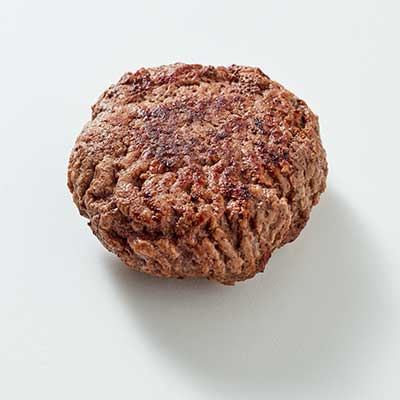
Most cuts of beef have 7 grams of protein per ounce, so a 4-ounce serving of ground beef will net you around 28 grams of protein. Compared to chicken, beef contains more fats (and calories from fat), along with nutrient-rich iron. Below are a few more common cuts of beef and the protein they provide. Make sure you choose organic and grass-fed as often as possible when consuming.
Other Beef Options:
- Steak (6 ounces): 42 grams protein
- Hamburger patty (4 ounces or ¼ pound): 28 grams protein
3. Tuna Fish Packet
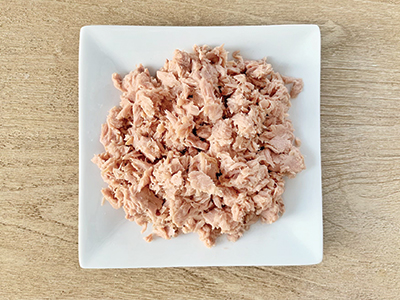
Tuna fish packets are one of the most portable and convenient sources of protein: they provide 40 grams. Fish and shellfish are good sources of protein, and oily fish such as salmon, tuna, mackerel, and sardines provide beneficial omega-3 fatty acids. On average, most fish fillets or steaks will provide 6 grams of protein per ounce.
A few other standard sources of fish and their protein total include:
- Shrimp (3 ounces): 18 grams protein
- Salmon (3 ounces): 17 grams protein
4. Hard-Boiled Eggs
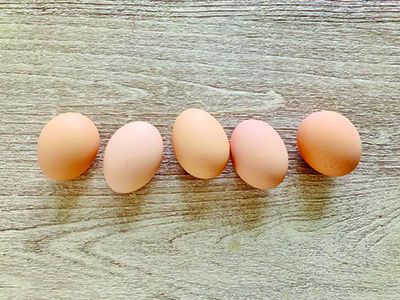
Five hard-boiled eggs will get you 30 grams of protein (6 grams per egg). Eggs are one of the most popular high-protein breakfast foods and provide essential fats. If you’re not interested in the yolks and want to only use the egg white for protein, you’ll need about eight of them to yield the same 30 grams of protein. (Note that the yolk is full of important nutrients such as choline for brain health and lutein for eye health, and important fat-soluble vitamins such as vitamins A, D, E, and K.) For quality, go for organic and cage-free eggs.
5. Bacon
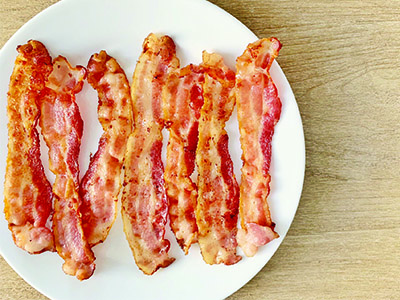
Similar to eggs, bacon can provide both ample protein and fat. To yield 30 grams of protein, you’ll need to eat about seven slices. In general, leaner pork cuts can provide the same protein content as beef and poultry per ounce. You also want to limit the amount of highly processed pork products in your diet.
Common pork options and the protein they yield:
- Pork chop (3½ to 4 ounces): 30 grams of protein
- Pork loin or tenderloin (4 ounces): 29 grams protein
- Ham (3 ounces): 19 grams protein
- Canadian-style bacon (1 slice): 5 to 6 grams protein
6. Cottage Cheese
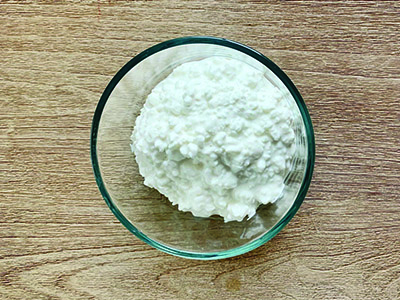
One cup of 2-percent cottage cheese will give you 30 grams of protein. Although a food group that is a common allergen amongst our population, dairy foods can be a great source of both protein and fat. If you can tolerate dairy foods, try to consume them in their most natural and full-fat forms, and go for organic as often as possible.
Other dairy foods and the protein they provide:
- Milk (1 cup): 8 grams protein
- Yogurt (1 cup): usually 8 to 12 grams protein (check label)
- Mozzarella cheese (1 ounce): 6 grams protein
- Cheddar or Swiss cheese (1 ounce): 7 or 8 grams protein
- Parmesan cheese (1 ounce): 10 grams protein
7. Extra-Firm Tofu
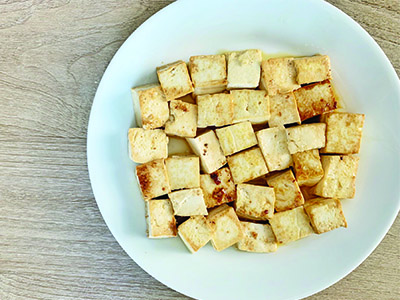
Tofu can often be a staple source of protein for those following a vegan or vegetarian diet: 1½ cups of cooked tofu can provide 30 grams of protein along with some healthy fat. Because tofu is made from soybeans, it’s considered a complete protein even though it’s from plants. We’d also suggest consuming organic sources of soy as well. Although beans don’t have all of the essential amino acids to be considered complete proteins, here are a few sources along with the protein they provide.
Other sources of plant-based proteins:
- Black, pinto, lentils (½ cup, cooked): 7 to 10 grams protein
- Soybeans (½ cup, cooked): 14 grams protein
- Split peas (½ cup, cooked): 8 grams protein
8. All-in-One Shake
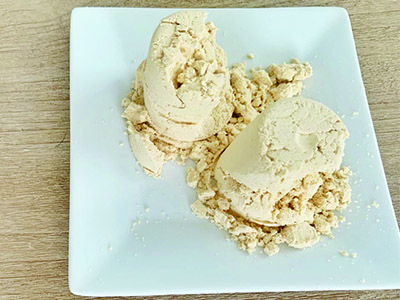
One serving of Life Time’s Vegan or Whey All-in-One Shake provides 30 grams of protein and can be a great tool to help you provide ample nourishment in place of a full-food meal. When it comes to protein powders and meal replacements, focus on quality and options with no artificial ingredients and sweeteners.
10 Tips to Eating More Protein
1. Find high-protein lunch and dinner recipes that will expand your protein intake. There are a few go-to ideas here, while you can also find a full collection of our top dietitian-approved recipes in the 1-2-12 cookbook.
2. Include a high-protein food, such as something from the ideas above, with each of your meals.
3. Experiment with cooking different types and cuts of meat with different seasonings. (If you want even more ideas, the 1-2-12 cookbook includes several time-tested recipes for marinades, spice rubs, sauces, and dressings to keep the flavor combinations of your meals endless.)
4. Choose ground meats — they generally cost less than steaks or other “fancier” cuts.
5. Examine a typical day of eating. Notice the meals and snacks in which you tend to concentrate your protein intake and the ones in which you don’t. How can you expand and/or redistribute?
6. Prioritize quality. If possible, purchase grass-fed beef; pasture-raised poultry, eggs, and pork; and wild-caught fish.
7. Buy in bulk — this allows you to save money ounce per ounce. Once you get the hang of planning and shopping for meals, you’ll get an idea of how much chicken, fish, or beef you’ll go through overtime.
8. Batch cook. Plan a day and time of the week to do some preparation for your meals and snacks. Since protein sources tend to be the most time-intensive, plan on batch cooking some chicken thighs, grass-fed patties ,or sausage to keep as stock for meals throughout the week. For snacks or other recipe ingredients, try batch cooking some bacon and/or hard-boiled eggs (or try these high-protein snack ideas).
9. Don’t eat breakfast for breakfast. This time of the day tends to be the hardest for people to eat ample protein. Make extra food at dinner to reheat at breakfast in the morning.
10. Use a high-quality protein powder, such as the LTH Fuel Vegan+All-in-One Shake Mix, to make a daily shake that will give you a protein boost and that works on the run without any extra cooking.
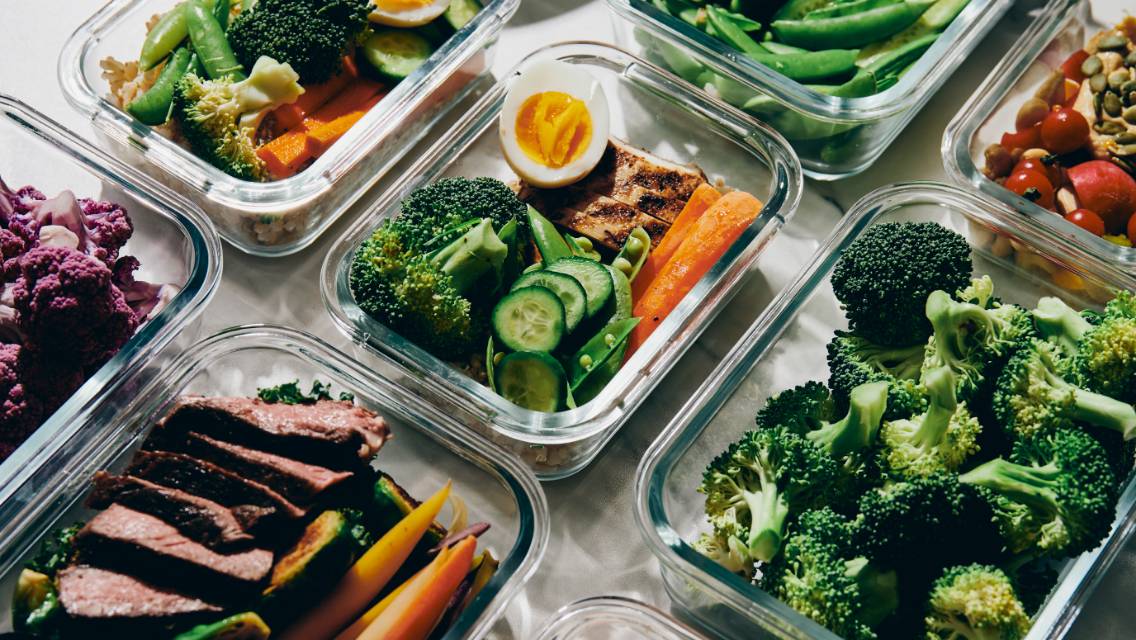


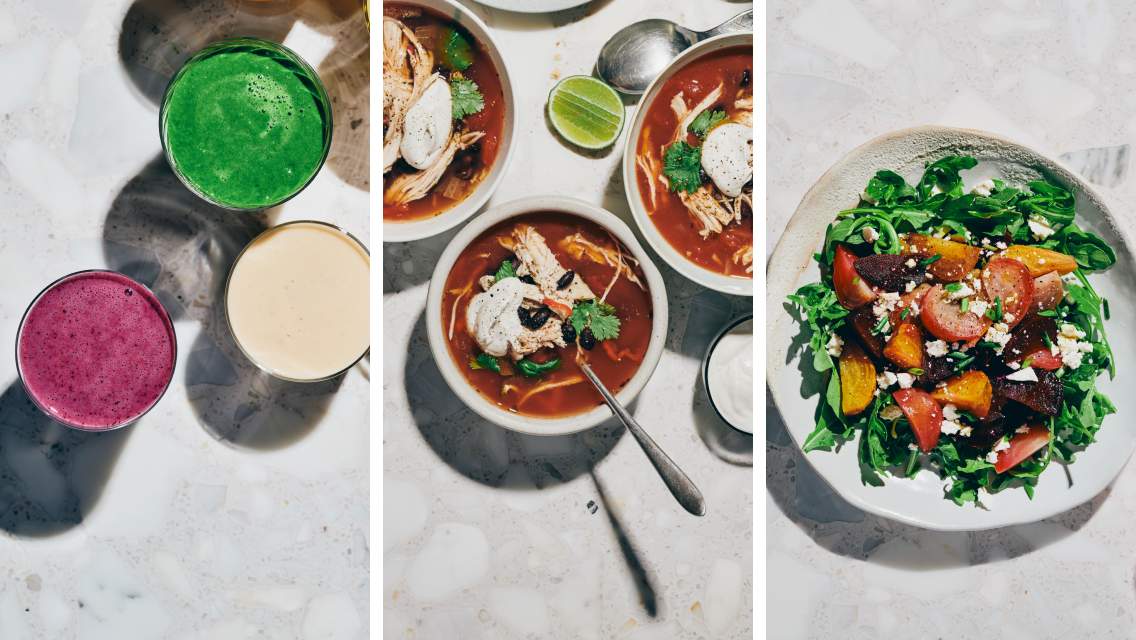
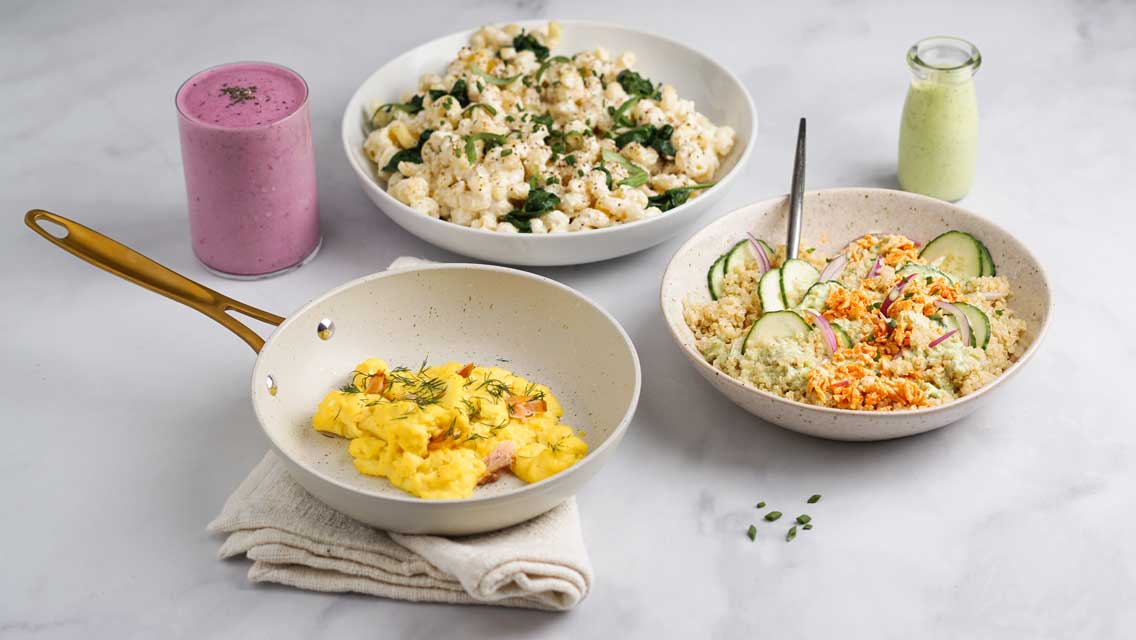
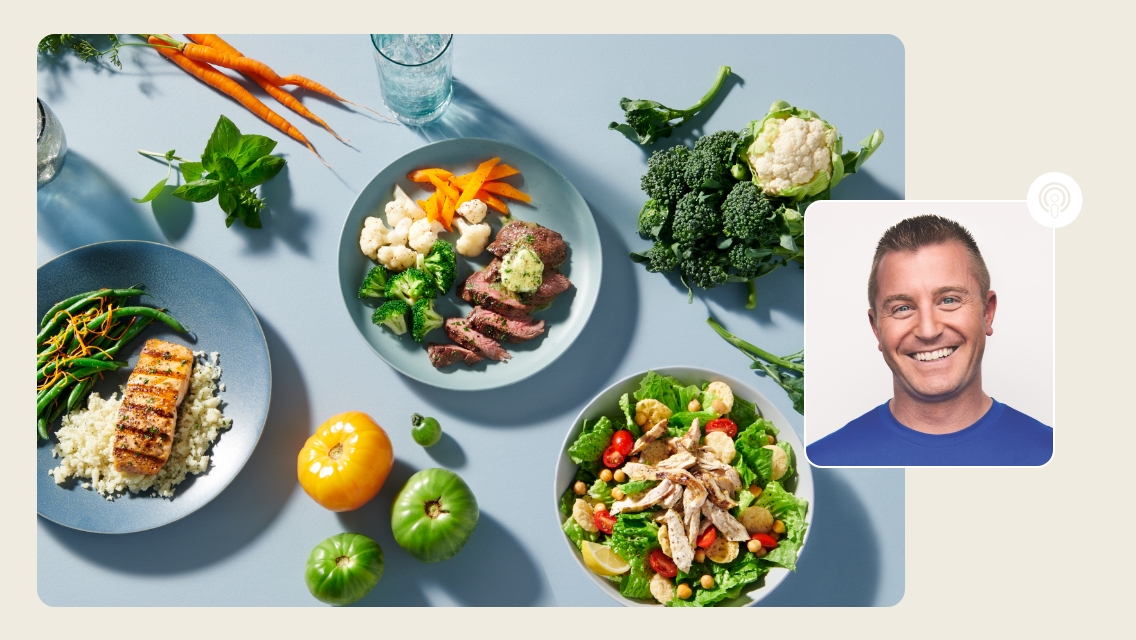
This Post Has 7 Comments
[…] calories. If you cut your carbohydrates back significantly, you can add either an equal amount of protein grams to make up for the difference, Gravity Keto Review slightly less than half as many fat grams, or […]
[…] calories. If you cut your carbohydrates back significantly, you could add either an equal amount of protein grams to renew the difference, slightly less than half as many fat grams, or some […]
[…] Consume 30 Grams of Protein […]
[…] https://www.healthline.com/nutrition/14-ways-to-eat-less-sugarhttps://experiencelife.lifetime.life/article/heres-what-30-grams-of-protein-looks-like/https://www.hsph.harvard.edu/nutritionsource/walking/https://www.cdc.gov/sleep/about_sleep/sleep_hygiene.htmlhttps://my.clevelandclinic.org/health/articles/9445-diaphragmatic-breathing […]
[…] 9 calories. If you cut your carbohydrates back significantly, you can add either the same amount of protein grams to replace the difference, slightly fewer than half as many fat grams, or some […]
[…] tasty blend boasts nearly 28 grams of protein per serving, making it a perfect postworkout […]
[…] Can refer to How many eggs to get 30g of protein? […]
Comments are closed.